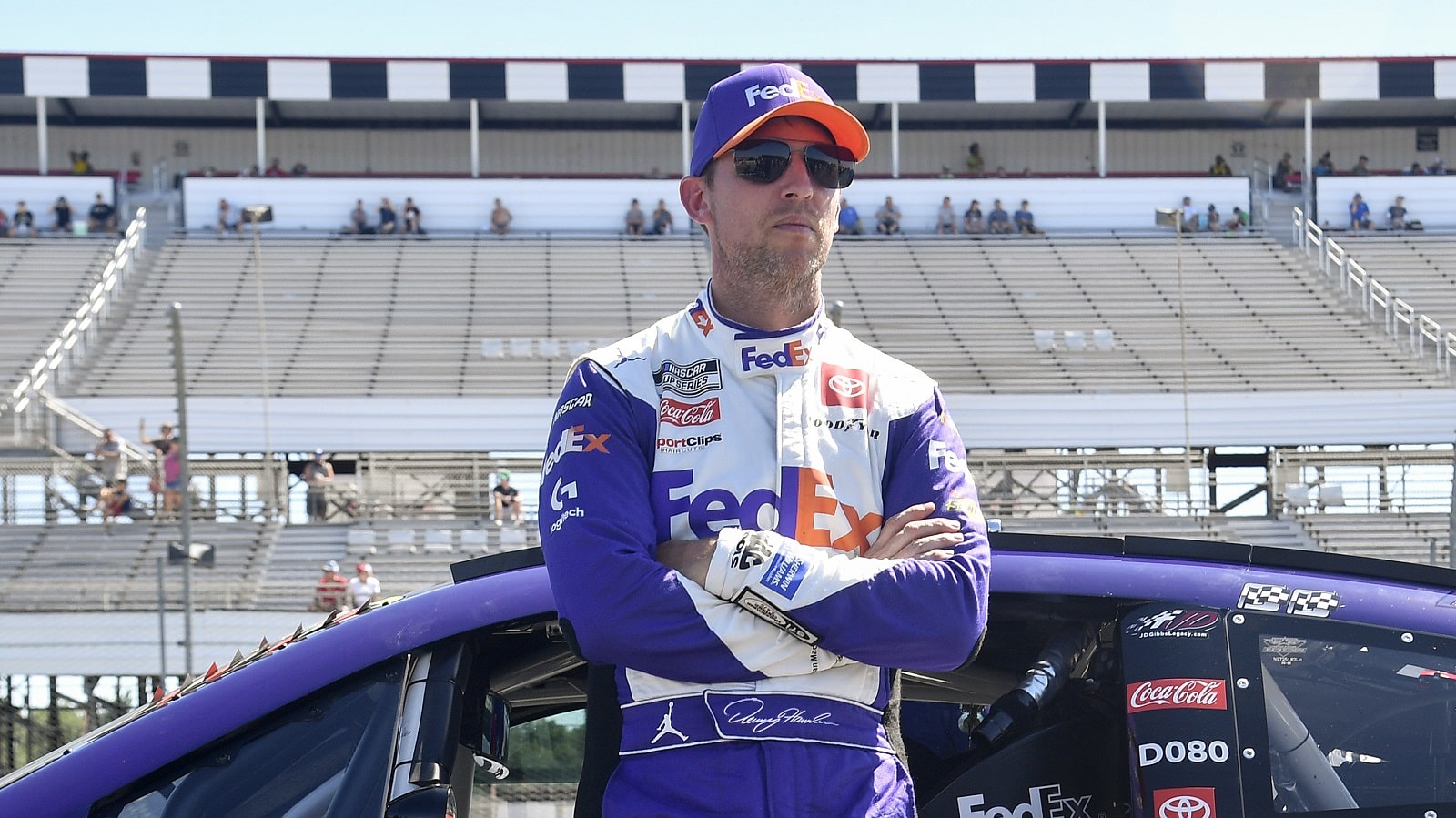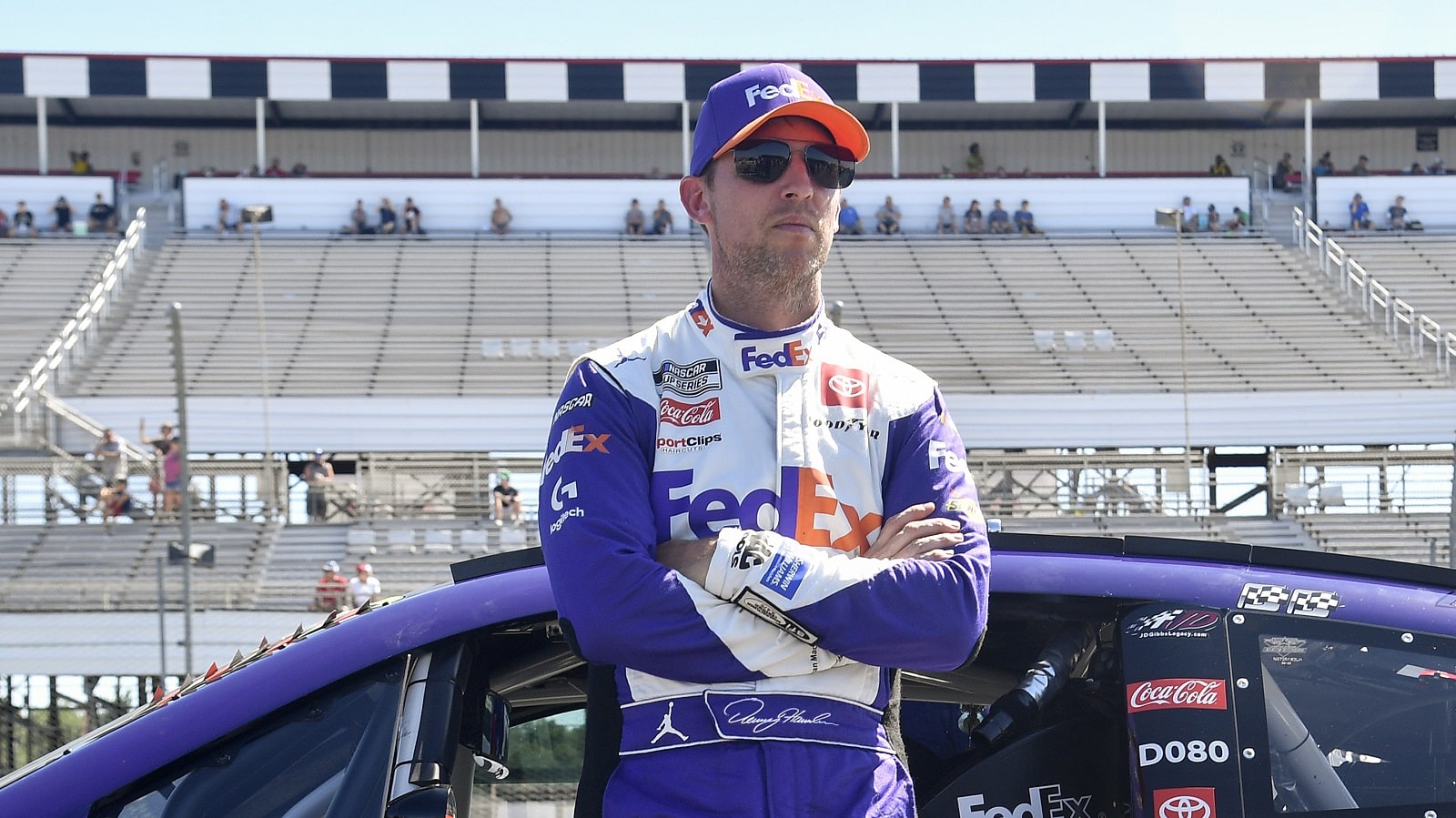NASCAR
Déjà Vu Times 2: NASCAR Disqualified Denny Hamlin Twice in 1 Weekend

The cars driven by Denny Hamlin and Kyle Busch created double trouble for Joe Gibbs Racing on Sunday at Pocono Raceway as NASCAR disqualified them from the top two spots in the Cup Series race after the post-race inspections.
Consider it a sign of the sport cracking down in advance of the playoffs.
It’s also a sign Hamlin is getting better. The last time NASCAR flagged him for a major problem, they DQ’d him twice in one weekend.
Sunday’s action against Denny Hamlin and Kyle Busch was a shocker

No one thought much of it a week ago when NASCAR disqualified two Xfinity Series cars at Loudon. Landon Cassill’s No. 10 Chevy, which originally placed third, and Noah Gragson’s No. 9 Chevy, which finished fourth, went to the back of the standings for failing post-race measurements of body heights.
Ears perked up a bit more on Saturday at Pocono Raceway when NASCAR announced L1 violations regarding rocker box vent holes on the Petty GMS Cup Series cars of Ty Dillon and Erik Jones. Their crew chiefs were ejected, and NASCAR also docked the Nos. 42 and 43 Chevys 35 driver and owner points.
Still, that was nothing compared to the development Sunday night. This time, the post-race inspection on the Joe Gibbs Racing Toyotas of Denny Hamlin and Kyle Busch, the race’s top two finishers, unearthed a problem with the front fascia of the No. 11 and 18 Toyotas.
As of Sunday night, the disqualifications were the only penalties for the drivers and JGR, but NASCAR was sending both cars off to its R&D Center in Concord, North Carolina, for further evaluation.
NASCAR disqualified Denny Hamlin twice in one weekend in 2017
Any team could make the same mistake twice in one race. The penalties NASCAR assessed Petty GMS likely stemmed from a high-level decision regarding how to set up both the team’s cars. Ditto for Sunday at Pocono and the Joe Gibbs Toyotas of Denny Hamlin and Kyle Busch. (An aside: JGR fielded two other cars in that race; observers are asking whether those cars might also have skirted the rules.)
But back on Labor Day weekend in 2017 at Darlington, Hamlin won twice in two days, only to have his No. 18 Toyota in the Xfinity Series and the No. 11 car in the Cup Series disqualified. Technically, NASCAR termed the results “encumbered” and didn’t strip the latter victory from its books. But his cars failed both post-race inspections every bit as much as your stoner roommate in the first semester of college failed his calculus final.
The “encumbered” terminology meant that NASCAR would leave the Cup Series standings intact, but the driver could not use the victory toward qualifying for the playoffs. That was moot in Hamlin’s case since he had already won at Loudon six weeks earlier. Joey Logano wasn’t as fortunate that year. NASCAR flagged his Richmond victory as encumbered, and the lack of another victory kept him out of the playoff field.
Why did NASCAR treat Hamlin’s two Cup Series DQ’s differently?
Understandably, it’s embarrassing when the inspection of the winning car after the crowd departs requires NASCAR to act. Fans leave the track believing one driver won the race and arrive home learning someone else got the credit and the first-place check.
That helps explain the “encumbered” lingo that NASCAR decided to use in 2016-17 to handle the awkward situations triggered by the winning cars of Denny Hamlin and Joey Logano failing inspection in separate races.
However, NASCAR changed its philosophy before the 2019 season by declaring that any race winners from its three national series found to have an L1 penalty following the race would be disqualified. The penalty carries with it the loss of all points for the day. Teams can appeal by filing notice before noon on Monday.
“We’re changing the culture,” explained Steve O’Donnell, NASCAR executive vice president and chief racing development officer at the time. “Our industry understands the need to focus on what happens on the race track. We cannot allow inspection and penalties to continue to be a prolonged storyline.”
That began the policy of inspecting the first- and second-place cars as well as one more vehicle at random. NASCAR’s stated goal at the time was to finish the process within 90 minutes of the conclusion of the race.
“When you leave the race track on Sunday night, you’ll know who the race winner is from our perspective,” O’Donnell said.
Like Sportscasting on Facebook. Follow us on Twitter @sportscasting19 and subscribe to our YouTube channel.
Got a question or observation about racing? Sportscasting’s John Moriello does a mailbag column each Friday. Write to him at [email protected].
RELATED: Is Anyone Buying Denny Hamlin’s Defense of a Controversial Decision?











